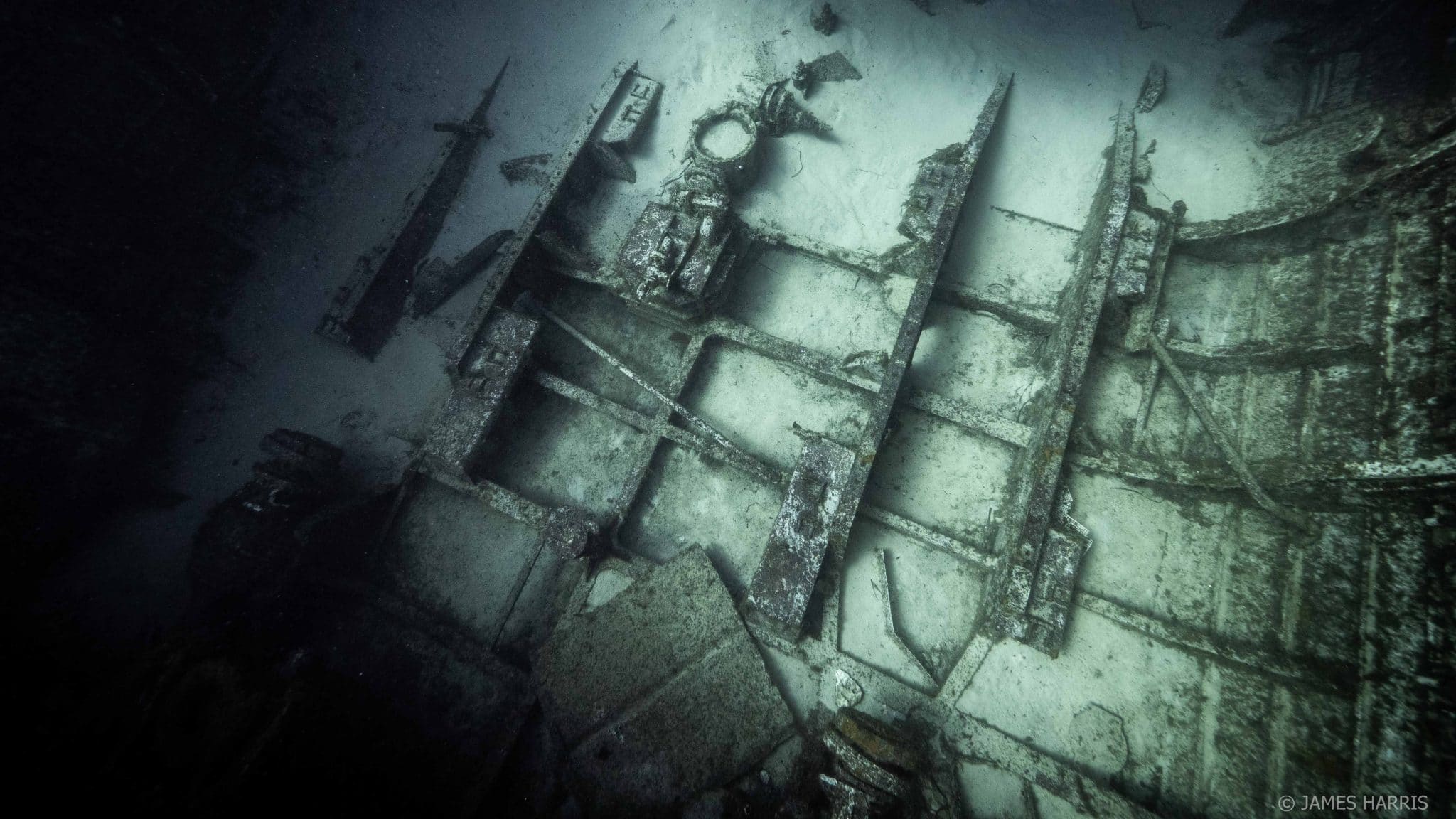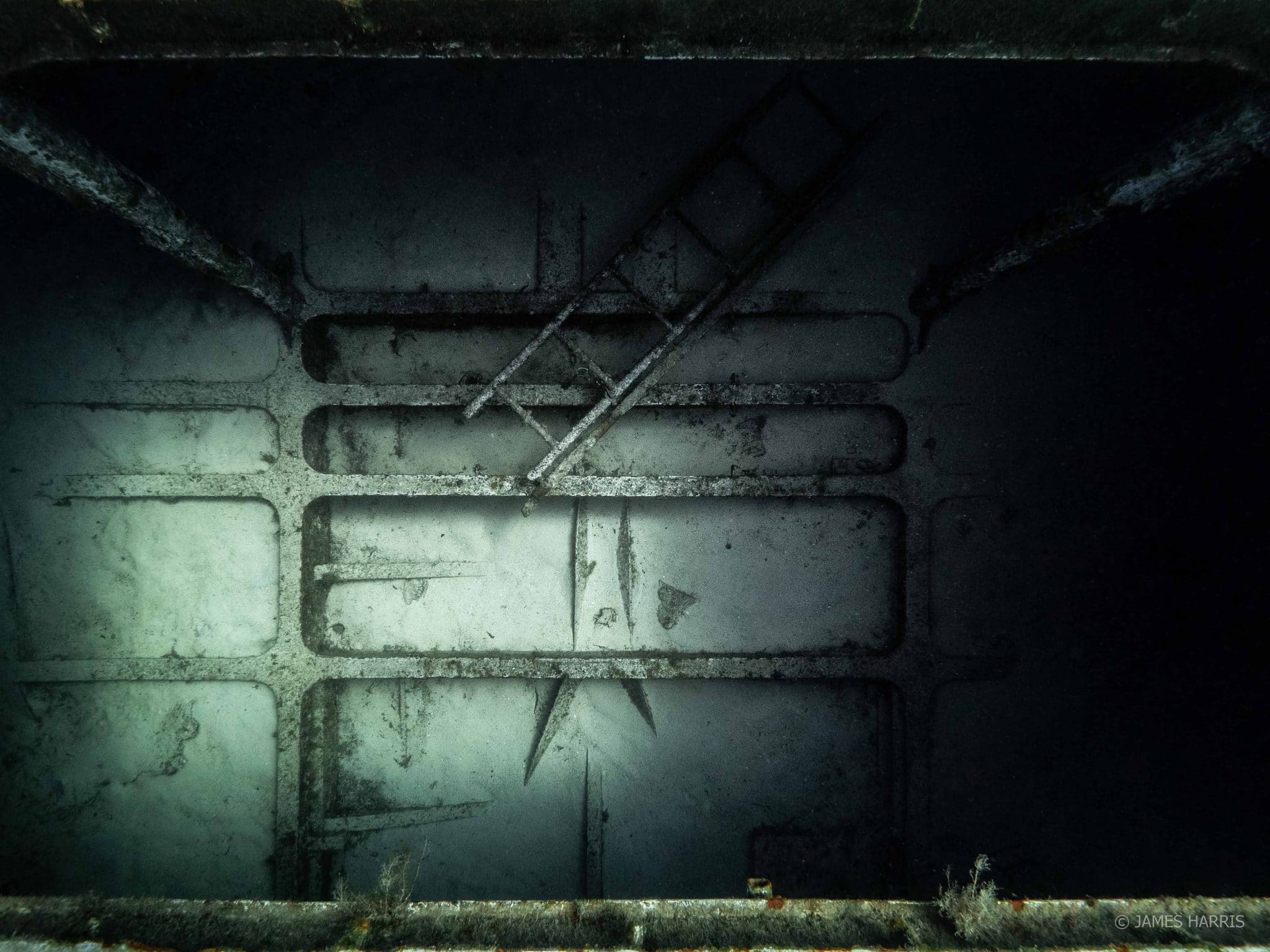News
The inside of a wreck – do I need a special certification to take interesting photos?

If you’ve ever asked your dive guide during a pre dive briefing whether you’re allowed to go inside a wreck, you may have been told that it will cost you an extra certification, or “specialty.” Either that, or you’re diving the SS Thistlegorm in the Red Sea and the first time you consider venturing inside the wreck is as your guide carelessly swims into a dark void, leaving you to contemplate your choices, but that’s another story…
A “penetration” dive (yes that’s a technical term, don’t look at me like that), involves diving inside a wreck where direct, upward access to the surface isn’t possible. Dives of this nature require specialised training, such as the “wreck” certification, or other advanced technical courses.
This may lead you to think that the best photos are unavailable to you until you can justify forking out for that next plastic card. However, if you are willing to think outside the box and be a little bit creative, you might be surprised. Here are three techniques for taking interesting shots while staying outside the wreck:
Technique 1: Shooting through gaps

The HMS Maori was a British WW1 destroyer originally sunk by a German bomber and now rests at 15m of depth in St Elmo Bay in Malta.
The photo above may look like it was taken from inside of the wreck, but apart from my arms and camera, I was still outside. Shooting through a gap in the hull (see the diver in the picture below) resulted in a moody shot looking up through the damaged deck, which let just enough light through to illuminate the mechanical parts on the seabed.
Most divers swim straight past these gaps, or only briefly glance through. But spaces such as these offer surprising opportunities for interesting pictures! This is particularly true when sunlight shines through openings in the deck/hull in the background of the shot, creating the type of unique lighting I captured above. Keep an eye out for gaps (big and small) on your next wreck dive and see if you can take a similar photo!
Technique 2: Carefully framing and forced perspective

The P31 was a patrol boat for the Maltese armed forces, and now rests at 20m of depth, just south of Comino Island.
As with the previous photo, you might assume the image above was taken during a penetration dive, however both me and the diver were in fact outside of the wreck. So, how did I do it? Firstly, I positioned the subject in front of a swim-through with a naturally well-lit background. Secondly, I made sure the foreground at the top and bottom of the image was cropped, hiding how far forward the ceiling/floor extended. Finally, I illuminated the foreground with artificial lighting to made it look as if there was no sunlight above. The result – an image where both diver and photographer appear to be inside the wreck. Keep an eye for interesting swim-throughs, line your shot up carefully, and you’ll be surprised how convincing your picture can be!
When I was taking this shot, if I were to look straight up, there would have been bright blue ocean above me!
Technique 3: Shooting from above
This photo is a little different. Conventional wisdom tells you that shooting straight down is a bad idea. This is generally true, but only because you often blur the distinction between background and foreground and interesting features become lost. However in this case, a storage hold created a unique exception to the rule. Keeping the edge of the steel opening in the frame helped create depth that is generally lost shooting down, and the contrast between the sand and the darker steel framework helps this image pop. The black shadows that creep in from the dark edges create a sense of uneasiness that really draws you in. As I was floating above this dark space, I couldn’t help feeling an urge to slowly sink down into it. As someone that shouts at the characters in horror films not to do stupid things, I couldn’t help but feel a bit hypocritical…
So, to answer to my original question – no, you don’t need that cert to take interesting wreck pictures! Get creative and try these three techniques on your next wreck dive. You might just swim away with something quite unique!
Gear News
Introducing the TR-80, IR-50 and CS-30 Regulators from DYNAMICNORD

Whether you are a beginner or a professional diver – with the three new main regulators from DYNAMICNORD, everyone will find their favourite regulator. They all look super stylish.
Excellent performance with the TR-80
Quality and performance are the be-all and end-all for regulators. It is not for nothing that the TR stands for Tec Reg. The innovative design of the TR-80 guarantees absolute reliability – even in ice-cold waters.

Perfect breathing effort at 0.8 J/l / certified for diving in waters below 10 degrees / structural design made of solid brass for best cold protection / membrane-compensated design with dry seal of the first stage / reduced exhalation effort thanks to optimized exhalation membrane and bubble deflector / adjustable Venturi (dive/predive) and adjustment knob for individual inhalation comfort / innovative design of the front cover prevents free-flow in strong currents or when diving with scooters / design made of sandblasted brass, matt chrome finish / 2 HP and 4 LP outlets / mouthpiece made of high-quality, anti-allergic silicone for maximum comfort.


Amazing underwater adventures with the IR-50
The IR-50 is the top regulator for advanced and experienced divers. Natural breathing is the essence of this regulator.

Ideal breathing effort at 0.8 J/l /certified for diving in waters below 10 degrees / compensated membrane / adjustable venturi (dive/predive) and adjustment knob for individual inhalation comfort/ outlet valve and deflector for minimum exhalation effort and reduction of bubbles on the face / design made of sandblasted brass, matt chrome finish / 2 HP and 4 NP outlets / mouthpiece made of high-quality, anti-allergic silicone for maximum comfort.


The Workhorse – our CS-30
For diving centres and diving beginners – the workhorse stands for strong construction, reliability and robustness. Perfect for your training.

Optimal breathing effort at 0.8 J/l /recommended for diving in waters above 10 degrees / non-compensated piston / adjustable venturi (dive/predive) / outlet valve and deflector for minimum exhalation effort and reduction of bubbles on the face / design made of sandblasted brass, matt chrome finish / 1 HP and 3 NP outlets / mouthpiece made of high-quality, anti-allergic silicone for maximum comfort.


Octopus OP-30
The OP-30 is the ideal addition to all DYNAMICNORD regulators. It is identical in construction to the CS-30.

The TR-80, IR-50, CS-30 (DIN & INT) regulators and the Octopus OP-30 are available from DYNAMICNORD dealers and in the online store.
DYNAMICNORD – Your Outdoor Companion.
Marine Life & Conservation
Paul Watson Released as Denmark Blocks Japan’s Extradition Bid

Renowned anti-whaling activist Paul Watson has been released from custody in Greenland after spending five months in detention. Denmark’s Justice Ministry rejected Japan’s request for his extradition, citing insufficient guarantees that his time already served in custody would be credited against any potential sentence.
The 74-year-old Canadian-American was arrested on July 21 in Nuuk, Greenland’s capital, when his ship docked to refuel. His arrest was based on a 2012 Japanese warrant related to a 2010 encounter in Antarctic waters. Japan alleged Watson obstructed operations and caused damage to a whaling research ship during efforts to disrupt illegal whaling. Watson has consistently denied these claims, maintaining his commitment to marine conservation.
Denmark, which oversees extradition matters for Greenland, concluded that while the legal conditions for extradition were met, the lack of assurances from Japan regarding time-served credit made extradition untenable.
In a video shared by his foundation, Watson expressed gratitude and relief, saying, “After five months, it’s good to be out… and good to know they’re not sending me to Japan.” He added that the most difficult part of his time in custody was being separated from his two young sons.
Watson is a pioneering figure in marine conservation, known for founding the Captain Paul Watson Foundation in 2022 after decades of activism with the Sea Shepherd Conservation Society. His bold efforts to defend marine life have earned him widespread support, including from celebrities and conservationists. His work has also been featured in the acclaimed reality TV series Whale Wars.
Watson’s lawyer, Jonas Christoffersen, praised the decision, stating, “We are happy and relieved that Paul Watson is now free.” He added that Watson is eager to reunite with his family and continue his vital work.
The arrest occurred while Watson’s vessel, the M/Y John Paul DeJoria, was en route to the North Pacific with a team of 26 volunteers to intercept a Japanese whaling ship. His foundation described the arrest as politically motivated and emphasized that Watson’s actions were focused on ending illegal whaling practices.
Japan resumed commercial whaling in 2019 after leaving the International Whaling Commission, asserting that whale meat is a cultural tradition. Conservationists, however, continue to challenge these practices, highlighting their impact on marine ecosystems.
Despite the challenges, Watson remains steadfast in his mission to protect marine life and bring attention to whaling practices. His dedication to ocean conservation has made him a globally respected advocate for the environment.
-

 News2 months ago
News2 months agoIconic SS United States to become the World’s Largest Artificial Reef
-

 News3 months ago
News3 months agoBook Review – 52 Assignments: Underwater Photography
-

 Gear News3 months ago
Gear News3 months agoDYNAMICNORD – New German diving brand enters the British market
-

 News3 months ago
News3 months agoExploring Cenote El Pit: A Diver’s Dream
-

 Gear News3 months ago
Gear News3 months agoTry BARE drysuits (and maybe even win one!) this Friday with Sea & Sea at North West Dive Fest
-

 Marine Life & Conservation3 months ago
Marine Life & Conservation3 months agoBook Review: Coral Triangle Cameos
-

 Blogs2 months ago
Blogs2 months agoDive the Egyptian Red Sea this Autumn with Regaldive
-

 News3 months ago
News3 months ago2024 Ocean Art Underwater Photo Competition Announced

















